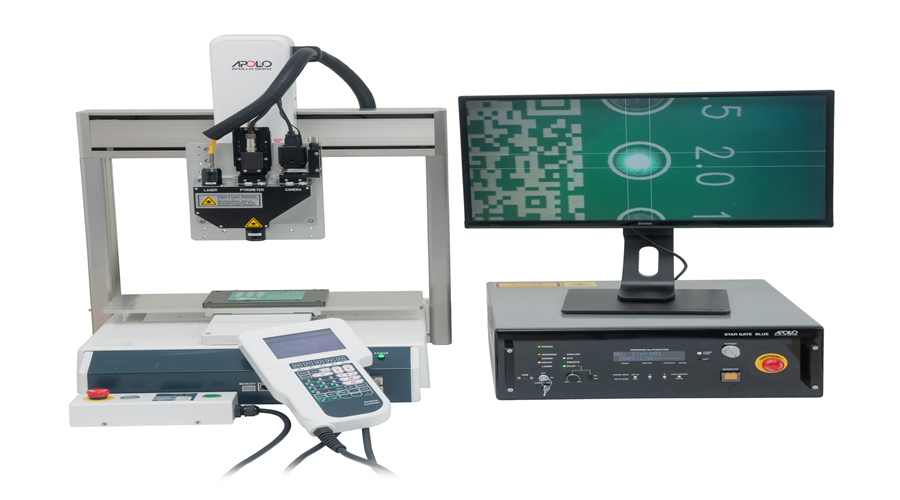Introduction to Laser Soldering
Laser soldering is an advanced soldering technique that utilizes a highly focused laser beam to heat and join soldered components. It is widely used in electronics, automotive, aerospace, and medical device manufacturing, offering precision and minimal thermal impact compared to traditional soldering techniques like wave and reflow soldering.
How Laser Soldering Works
Laser soldering operates by directing a controlled laser beam onto a solder joint, heating it to the required temperature to melt the solder and form a secure electrical or mechanical connection. The key components of a laser soldering system include:
- Laser Source: Typically a fiber laser, diode laser, or Nd:YAG laser, chosen based on the application requirements.
- Beam Delivery System: Optical fibers or galvanometer scanners to direct the laser beam to the precise soldering location.
- Process Monitoring System: Infrared or vision-based sensors to ensure quality and consistency.
- Flux Application System: To clean oxidation and improve wetting properties of the solder.
The laser’s intensity, duration, and focus are carefully controlled to avoid overheating and ensure optimal bonding.
Laser Soldering Process
The laser soldering process follows these key steps:
- Surface Preparation: The materials to be soldered must be cleaned and flux applied to prevent oxidation.
- Positioning & Fixturing: Components are precisely positioned to ensure accurate solder joint formation.
- Laser Heating: The laser is directed at the soldering site with carefully controlled power and duration.
- Solder Melting & Wetting: The solder melts and flows over the joint, creating a reliable electrical and mechanical connection.
- Cooling & Solidification: The solder joint solidifies, forming a strong bond with minimal stress or thermal damage.
- Inspection & Quality Control: Automated systems, such as X-ray or infrared imaging, may be used to verify joint integrity.
Applications of Laser Soldering
Laser soldering is employed in various high-precision industries, including:
- Electronics Manufacturing: Used in PCB assembly, wire bonding, and micro-soldering for miniaturized circuits.
- Automotive Industry: Employed in sensor connections, battery pack manufacturing, and electronic control modules.
- Medical Devices: Used for assembling compact and delicate electronic components in medical implants and diagnostic equipment.
- Aerospace & Defense: Essential for high-reliability solder joints in avionics and military electronics.
- Telecommunications: Applied in optical fiber splicing and high-frequency circuit board soldering.
Advantages of Laser Soldering
Laser soldering offers several advantages over conventional soldering techniques:
- Precision & Control: Allows fine control over temperature, beam positioning, and solder flow.
- Minimal Thermal Impact: Reduces heat stress on delicate components, making it ideal for miniaturized electronics.
- Non-Contact Process: Eliminates mechanical stress and contamination risks.
- Automation Friendly: Easily integrates with robotics and inline inspection systems for high-throughput manufacturing.
- Consistent & Repeatable Results: Ensures uniform solder joints, reducing defects and rework.
- Eco-Friendly: Reduces solder waste and eliminates the need for high-temperature heating elements.
Disadvantages of Laser Soldering
Despite its many benefits, laser soldering also has some limitations:
- High Initial Cost: Requires investment in specialized equipment and skilled operators.
- Material Sensitivity: Some materials may not absorb laser energy efficiently, requiring careful parameter adjustments.
- Limited Joint Sizes: May not be suitable for large-area soldering applications.
- Laser Safety Considerations: Requires protective measures to prevent accidental exposure to high-intensity laser beams.
- Dependency on Precise Alignment: Small misalignments can affect solder quality and reliability.
Conclusion
Laser soldering is a cutting-edge technology that enhances precision, efficiency, and reliability in soldering applications. While it comes with a higher upfront cost and requires careful process control, its advantages in high-precision industries make it a preferred choice for modern manufacturing. As technology evolves, improvements in laser systems and automation will further expand the scope of laser soldering, making it an indispensable tool in next-generation electronics and industrial applications.






